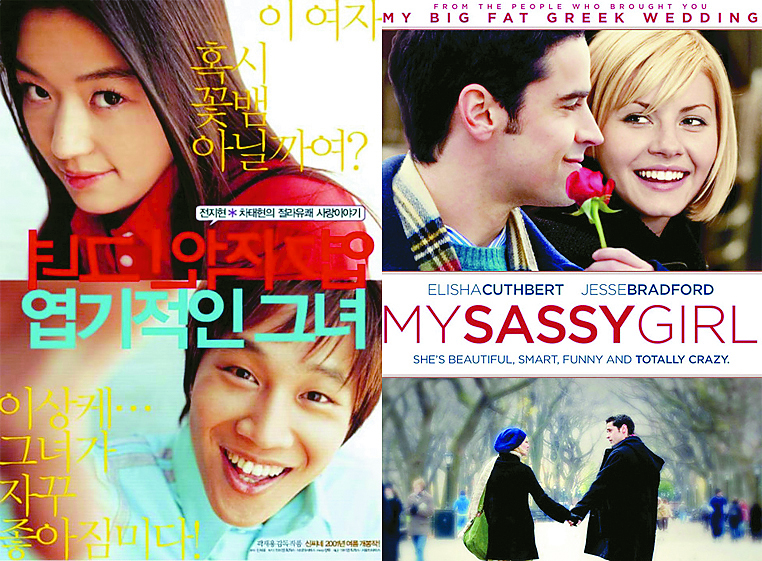Many of us sit on the couch and watch a movie with friends, sometimes hearing someone exclaim, “Meh. The original was better!” Living in a time where “throwback” and “retro” is constantly promoted as the trend, we sometimes forget that much of what we hear on the radio or watch on a screen has been done before. In the past decade, numerous films have been adapted from Asian films and have been remade by Hollywood for Western audiences. Few of these remakes have matched the commercial success or critical acclaim of the originals. Check out a couple of remakes below, that you may not have known were based on Korean films!
“My Sassy Girl (2001)” v. “My Sassy Girl (2008)”
Directed by Kwak Jae Young, the romantic comedy “My Sassy Girl,” starring Jun Ji Hyun and Cha Tae Hyun, was a blockbuster throughout East Asia after its release. The story revolves around Gyeon-Woo (Cha Tae Hyun) who meets Jun Ji Hyun’s character by chance after she almost drunkenly falls onto the subway tracks. Simply referred to throughout the film as “The Girl,” Jun’s character is drunk quite often, which is seen as part of the comedy of the film. The drinking culture is prevalent as a social norm in Korea.
In the American version, starring Jesse Bradford and Elisha Cuthbert, Cuthbert’s character, Jordan, is often drunk. However, her drunkenness detracts from the film’s comedy.. Issues, such as being filial to one’s parents, from the Korean version do not translate well in the American edit, contributing to the lack of development of Bradford’s portrayal of Gyeon-Woo’s character. Viewers are unable to identify his character as a momma’s boy, which also creates humor in the original film. Adding to the differences, the American version had nowhere near as much success as did the Korean version. It was not screened in movie theaters, but rather was released directly to DVD.
“Old Boy (2003)” v. “Old Boy (2013)”
When released in 2003, Park Chan Wook’s “Old Boy” became an instant classic of Korean cinema. The film was acclaimed worldwide, and even won the “Grand Prix” prize at the Cannes Film Festival in 2004. World-renowned director Quentin Tarantino gave the film praise, highlighting the dark humor, mystery and unpredictable twists.
Choi Min Shik’s portrayal of the main character, Oh Dae-Su, garners sympathy from the viewer by providing limited information about his past, and about the circumstances concerning his capture and detainment. Withholding some character background and other key information allows for a more exciting viewing experience, allowing spectators to draw their own conclusions and insight to determine what are the causes and effects in the film.
Spike Lee’s 2013 version was criticized for turning the Oh Dae-Su character into an unlikable protagonist. The inclusion of too much information about the characters takes away from the impact of the unclear ending, which made the original so groundbreaking.
These remakes tried to reinterpret unique and successful stories for a broader audience. Unfortunately, while doing so, the remakes lost the qualities that made the original films resonate with people, creating bland films which fail to create emotions in the viewer. It is worth it to sit through and read the subtitles to become fully engrossed in the storytelling, which is so strong and vivid in both Kwak and Park’s works. To understand the creative intent of the Korean filmmakers, it would be best to watch the original films, which are deserving of more attention.
By Steven Ayala











